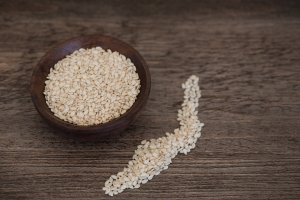What is the best substitute for Sesame Seeds?
What is the best substitute for sesame seeds? If you’re looking for substitutes for sesame seeds due to allergies, dietary restrictions, or unavailability, there are several alternatives you can use in your recipes. The choice of substitute will depend on the specific recipe and the flavor profile you’re aiming for. Try using: Poppy Seeds, Sunflower Seeds, Flaxseeds, Chia Seeds, Pumpkin Seeds, Hemp Seeds, Shredded Coconut, Almonds or other chopped nuts.
When substituting, keep in mind that the taste and texture may not be identical to sesame seeds, so you may need to adjust the quantities and experiment to achieve the desired result. Additionally, some substitutes like sunflower seeds and pumpkin seeds may need to be roasted or lightly toasted to bring out their flavors. Always consider any potential allergies or dietary restrictions when using substitutes.
What are Sesame Seeds?
Sesame seeds are the seeds of the sesame plant. They are tiny, oval-shaped seeds with a flat, smooth surface and come in different colors, including white, black, yellow, and red, depending on the variety of the plant. Sesame seeds are commonly used in various cuisines around the world, particularly in Asian, Middle Eastern, and Mediterranean dishes.
These seeds have a nutty flavor and a delicate crunch, making them a popular ingredient in both sweet and savory recipes. Sesame seeds are widely used as a garnish, seasoning, or ingredient in foods like bread, buns, crackers, cookies, tahini (a paste made from ground sesame seeds), hummus, and various Asian dishes. They are also used to make sesame oil, which is widely used in cooking and as a condiment.
Sesame seeds are not only valued for their culinary uses but also for their nutritional benefits. They are a good source of healthy fats, protein, fiber, vitamins, and minerals, including calcium, iron, magnesium, and zinc.
Sesame seeds are usually sold as whole seeds (unhulled), hulled seeds (outer layer removed), or ground into sesame paste or tahini. They are widely available in grocery stores and can be found in the spice or baking section.
Okay, before we look at your substitute sesame seed options, let’s deal with that empty cupboard situation!
Where can I buy Sesame Seeds?
If you want to be more prepared and ensure you don’t run out of sesame seeds then you should stock up now.
Nowadays most delicatessens and general supermarkets stock a wide variety of sesame seeds.
Or if you prefer you can also purchase sesame seeds on-line.
So why not jump on and place your order today.
STOCK UP NOW!
Try these 100% organic sesame seeds. This tiny superfood is packed full of minerals, calcium and vitamins.
Sprinkle over cereals, smoothies, or include in bakes for a super nutrient boost.
USDA Organic. Gluten-free, Kosher and Vegan friendly.
What can I substitute for Sesame Seeds?
Here are some of the best ingredients to substitute the flavor and role that sesame seeds provide in your recipes.
- Poppy Seeds
- Sunflower Seeds
- Flaxseeds
- Chia Seeds
- Pumpkin Seed
- Hemp Seeds
- Shredded coconut
- Almonds or other chopped nuts
Sesame Seed substitutes
Poppy Seeds
Using poppy seeds as a substitute for sesame seeds can be a great option in various recipes. Poppy seeds have a similar size and a slightly nutty flavor, which makes them a suitable replacement in many dishes. Here are some ways you can use poppy seeds as a substitute for sesame seeds:
- Baked goods: Sprinkle poppy seeds on top of bread, rolls, bagels, or muffins before baking. They can add a delightful crunch and a hint of nutty flavor to your baked goods.
- Salad topping: Use poppy seeds as a garnish for salads. They can add texture and taste to green salads or fruit salads.
- Coatings and crusts: Poppy seeds can be used as an alternative to sesame seeds in coatings for chicken, fish, or tofu. You can also mix them with breadcrumbs for a delicious crunchy crust.
- Dressings and sauces: Incorporate poppy seeds into dressings, sauces, or vinaigrettes for a subtle nutty flavor.
- Desserts: You can also add poppy seeds to desserts like cakes, cookies, and pastries for a unique twist. Lemon-poppy seed cake is a classic example of a delightful combination, and one that goes down well in our house.
- Rice and grain dishes: Sprinkle poppy seeds over rice, quinoa, couscous, or other grain dishes to enhance their taste and appearance.
- Smoothies: Blend poppy seeds into your smoothies for an extra boost of nutrition and a mild nutty flavor.
When using poppy seeds as a substitute, you can generally follow the same proportions as you would with sesame seeds. Keep in mind that poppy seeds have a more mild flavor than sesame seeds, so you may need to adjust the quantity based on your taste preferences. Also, note that poppy seeds can provide a beautiful speckled appearance to your dishes, which can be especially appealing in baked goods and dressings.
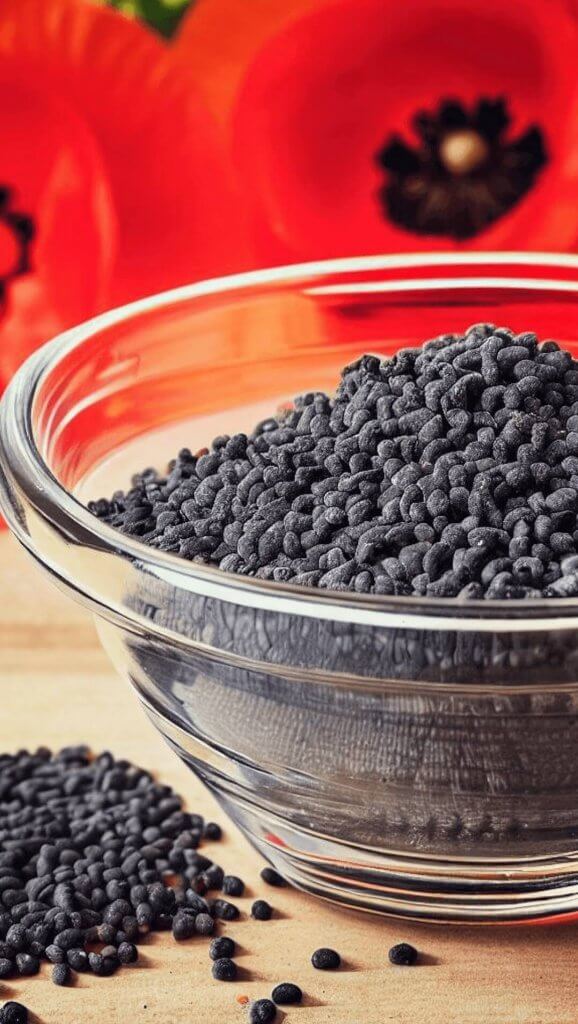
Sunflower Seeds
Using sunflower seeds as a substitute for sesame seeds can work well in various dishes. While they are slightly larger in size, sunflower seeds have a similar nutty flavor and a pleasant crunch, making them a versatile replacement. Here are some ways to use sunflower seeds as a substitute for sesame seeds:
- Baked goods: Sprinkle sunflower seeds on top of bread, rolls, muffins, or cookies before baking. They will add a nice texture and nutty taste to your baked goods.
- Salad topping: Use sunflower seeds as a garnish for salads. They can add a delightful crunch and a nutty flavor to your greens.
- Coatings and crusts: Crush or chop sunflower seeds and use them as a substitute for sesame seeds in coatings for chicken, fish, or tofu. They will also work well in combination with breadcrumbs or even just on their own.
- Trail mix and granola: Add sunflower seeds to your favorite trail mix or granola recipe. They provide a satisfying crunch and contribute to the overall flavor profile.
- Nut butters and spreads: You can make sunflower seed butter, similar to tahini made from sesame seeds. Blend roasted sunflower seeds with a bit of oil and salt to create a tasty spread.
- Rice and grain dishes: Sprinkle sunflower seeds over rice, quinoa, couscous, or other grain dishes to add a nutty touch and increase their nutritional value.
- Smoothies: You could also blend sunflower seeds into your smoothies to enhance the flavor and provide a protein and nutrient boost. Ensure there are no large pieces that you could choke on.
Remember that sunflower seeds have a slightly different taste compared to sesame seeds, so the final result might have a subtle variation. Adjust the quantity of sunflower seeds based on your preference and the specific recipe you’re working with. Additionally, consider toasting or roasting the sunflower seeds before use, as this can enhance their flavor and aroma.
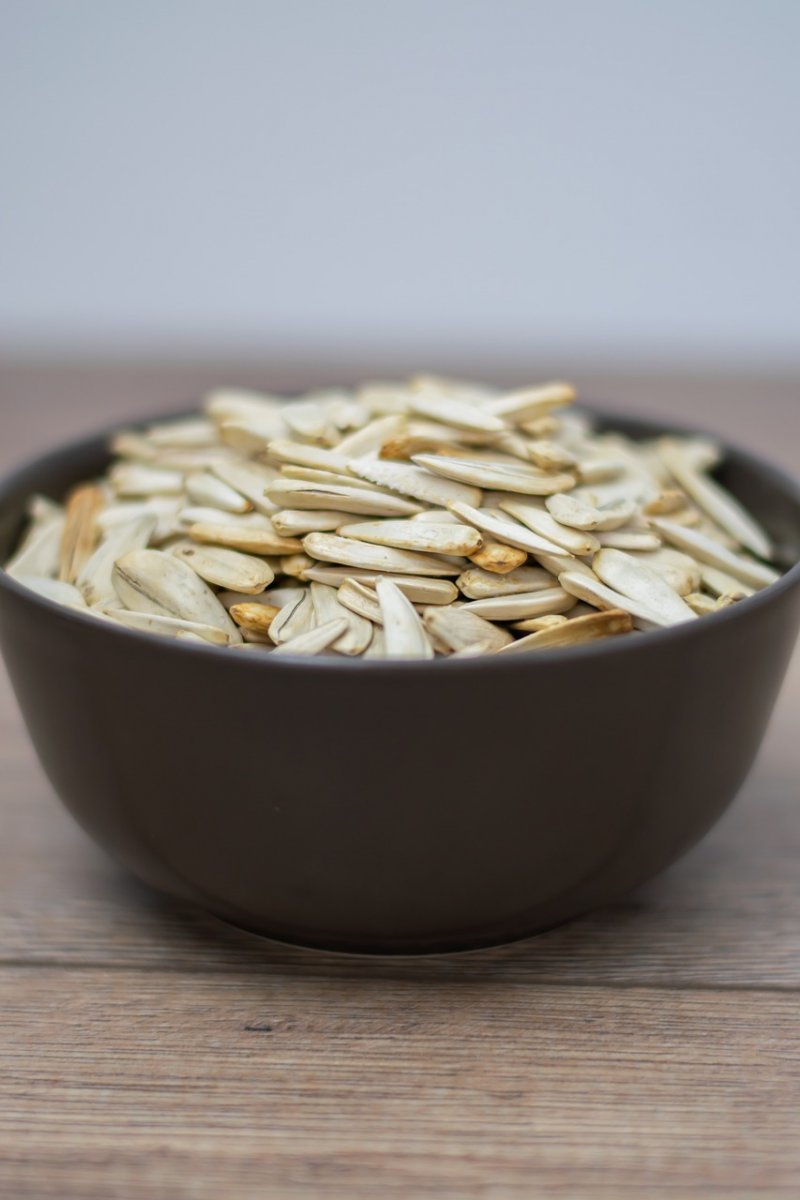
Flaxseeds
Using flaxseeds as a substitute for sesame seeds can be a healthy and nutritious alternative. Flaxseeds have a mild nutty taste and are an excellent source of omega-3 fatty acids and fiber. Here are some ways you can use flaxseeds as a substitute for sesame seeds:
- Baked goods: Incorporate ground flaxseeds into muffins, bread, cookies, or other baked goods. They can add a nutty flavor and also a nutritional boost to your recipes.
- Smoothies: Add ground flaxseeds to your smoothies for extra fiber, omega-3s, and a subtle nutty taste.
- Coatings and crusts: Use ground flaxseeds as a substitute for sesame seeds in coatings for chicken, fish, or tofu. Combine them with breadcrumbs or other herbs and spices for a delicious crust.
- Dressings and sauces: Mix ground flaxseeds into dressings, sauces, or vinaigrettes to add thickness and nutrition to your dishes.
- Breakfast cereal or yogurt topping: Sprinkle ground flaxseeds over your morning cereal or yogurt for added texture and flavor.
- Energy bars and granola: Incorporate ground flaxseeds into homemade energy bars, granola bars, or granola mixes for a nutritious snack.
- Egg substitute: In some recipes, you can use ground flaxseeds mixed with water as an egg substitute for binding purposes. This works particularly well in vegan baking.
When using flaxseeds as a substitute, it’s essential to use ground flaxseeds rather than whole flaxseeds. Whole flaxseeds may pass through the digestive system undigested, meaning you won’t get the full nutritional benefit. To use ground flaxseeds as an egg substitute, mix one tablespoon of ground flaxseeds with three tablespoons of water, and let it sit for a few minutes until it forms a gel-like consistency.
Keep in mind that flaxseeds have a slightly different texture and taste compared to sesame seeds, so the final result may have a subtle variation. Adjust the quantity of flaxseeds based on your preference and the specific recipe you’re working with.
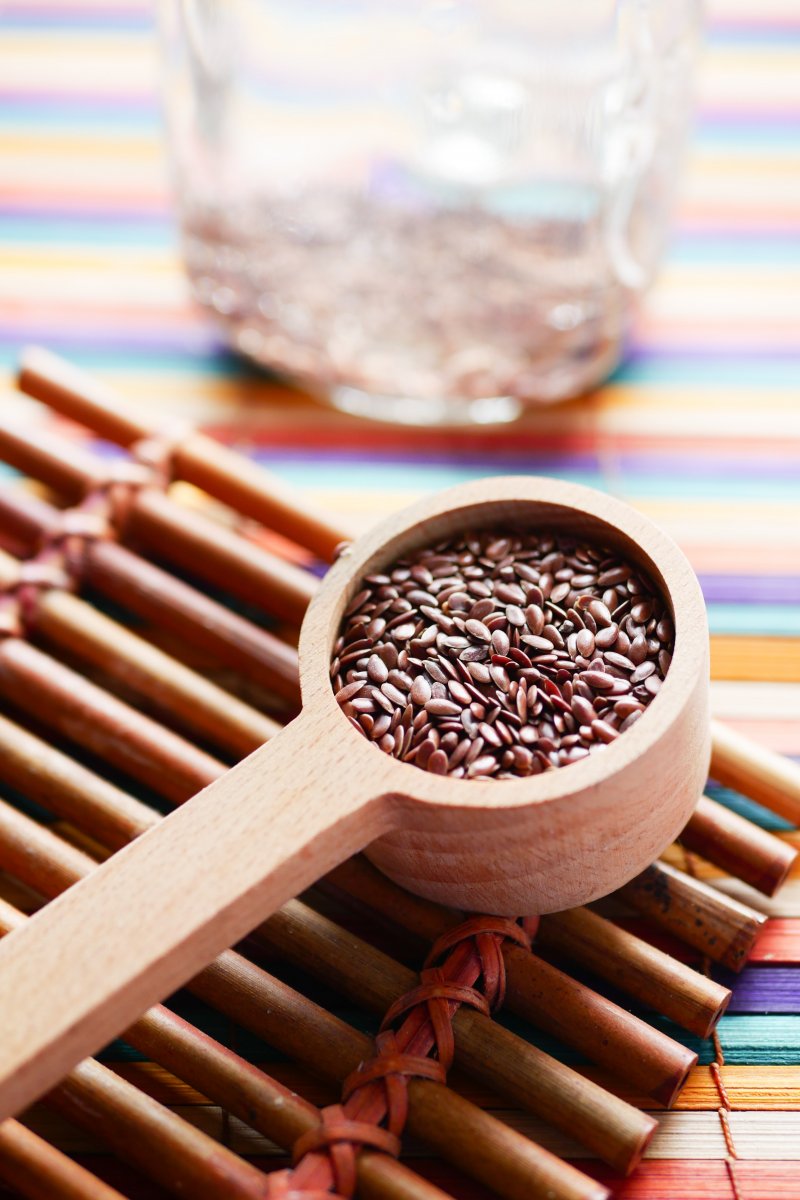
Chia Seeds
Chia seeds can be a fantastic substitute for sesame seeds in various dishes. They have a mild, nutty flavor and are known for their high omega-3 fatty acid content, fiber, and protein. Here are some ways you can use chia seeds as a substitute for sesame seeds:
- Baked goods: Sprinkle chia seeds on top of bread, rolls, muffins, or cookies before baking. They will add a delightful crunch and a nutty taste to your baked goods.
- Salad topping: Use chia seeds as a garnish for salads. They can add a pleasant crunch and a boost of nutrition to your greens.
- Coatings and crusts: Use ground chia seeds as a substitute for sesame seeds in coatings for chicken, fish, or tofu. Combine them with breadcrumbs or other herbs and spices for a flavorful crust.
- Smoothies: You could also add chia seeds to your smoothies to enhance the texture and nutritional content. They will add thickness and help create a more filling drink.
- Puddings and porridges: Chia seeds can be used to make chia pudding, which is a delicious and nutritious dessert or breakfast option. They absorb liquid and create a gel-like texture when mixed with milk or plant-based alternatives.
- Homemade granola bars: Incorporate chia seeds into homemade granola bars for an extra nutritional boost and added crunch.
- Egg substitute: Chia seeds can also be used as an egg substitute in certain recipes. To replace one egg, mix one tablespoon of whole chia seeds with three tablespoons of water and let it sit until it forms a gel-like consistency.
When using chia seeds as a substitute, keep in mind that they can absorb liquid and create a gel-like texture, similar to flaxseeds. This characteristic works well in some recipes, such as puddings and smoothies, but may not be suitable for all dishes. Adjust the quantity of chia seeds based on your preference and the specific recipe you’re working with.
As with any substitute, chia seeds will have a slightly different texture and taste compared to sesame seeds. However, their nutritional benefits make them an excellent option for enhancing the overall nutritional profile of your dishes.
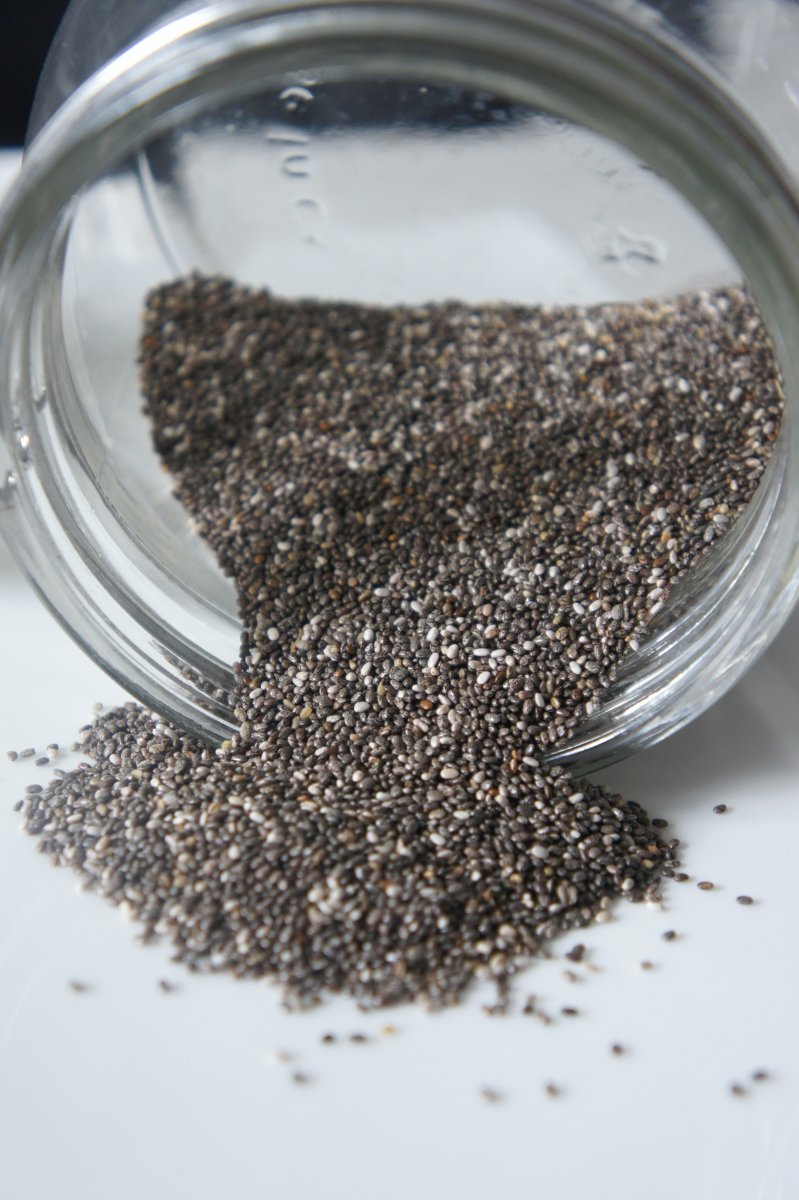
Pumpkin Seeds
Using pumpkin seeds, also known as pepitas, as a substitute for sesame seeds can add a delicious twist to your dishes. Pumpkin seeds have a unique nutty and earthy flavor, which complements various recipes. Here are some ways you can use pumpkin seeds as a substitute for sesame seeds:
- Salad topping: Use roasted or toasted pumpkin seeds as a garnish for salads. They will add a delightful crunch and a rich, nutty taste to your greens.
- Baked goods: Sprinkle pumpkin seeds on top of bread, rolls, muffins, or cookies before baking. They can provide a unique texture and flavor to your baked goods.
- Coatings and crusts: Crush or chop pumpkin seeds and use them as a substitute for sesame seeds in coatings for chicken, fish, or tofu. They will also work well in combination with breadcrumbs or alone.
- Snack mixes: Mix roasted pumpkin seeds with other nuts and dried fruits to create a tasty and nutritious snack mix.
- Rice and grain dishes: Sprinkle roasted or toasted pumpkin seeds over rice, quinoa, couscous, or other grain dishes to enhance their taste and appearance.
- Pesto: You could also replace pine nuts or sesame seeds with pumpkin seeds in pesto sauce for a delightful twist on a classic recipe.
- Trail mix and granola: Add pumpkin seeds to your favorite trail mix or granola recipe. They provide a satisfying crunch and a boost of nutrition.
When using pumpkin seeds as a substitute, consider toasting or roasting them to bring out their full flavor. Adjust the quantity of pumpkin seeds based on your taste preferences and the specific recipe you’re working with. Pumpkin seeds are generally larger and have a slightly different taste compared to sesame seeds, but they can still add a delightful and distinct flavor to your dishes.
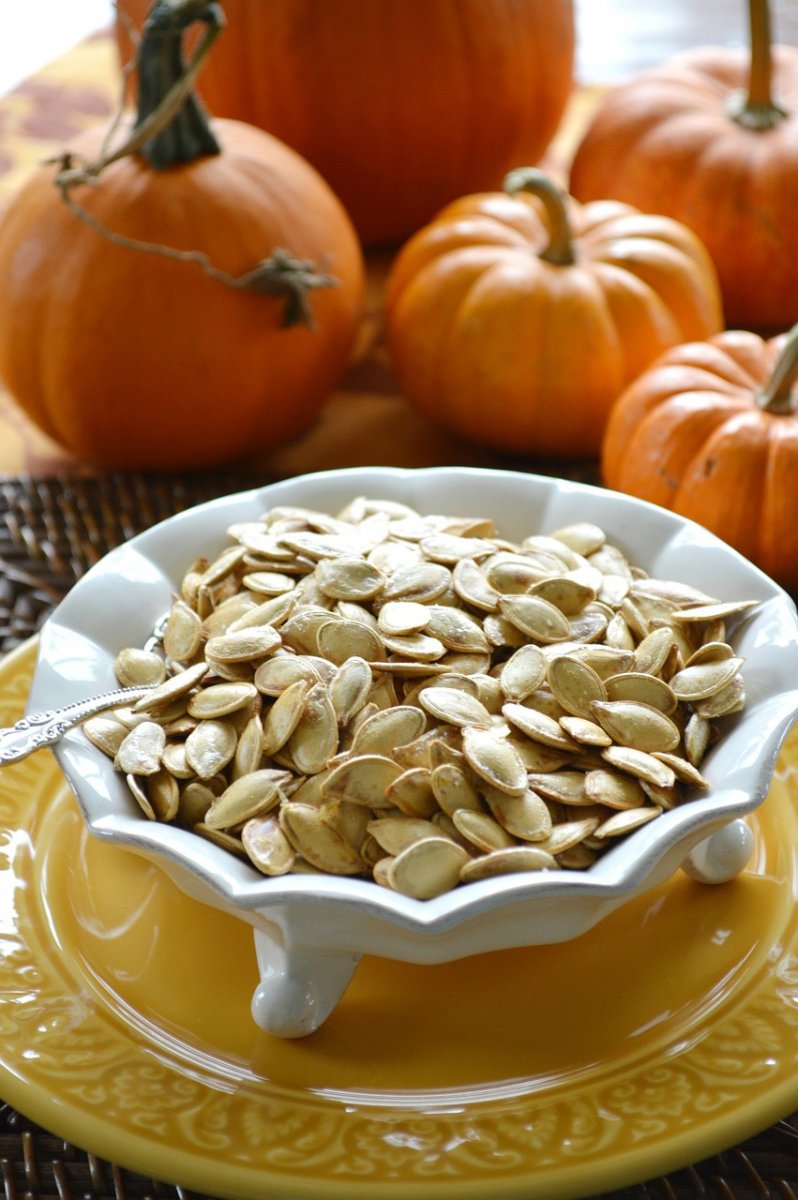
Hemp Seeds
Using hemp seeds as a substitute for sesame seeds can be a nutritious and flavorful option. Hemp seeds have a nutty taste and are a great source of protein, omega-3 and omega-6 fatty acids, and various minerals. Here are some ways you can use hemp seeds as a substitute for sesame seeds:
- Salad topping: Sprinkle hemp seeds over salads to add a nutty flavor and a boost of nutrition to your greens.
- Baked goods: Incorporate hemp seeds into muffins, bread, cookies, or other baked goods. They can add a subtle nutty taste and a nutritional boost to your recipes.
- Smoothies: Blend hemp seeds into your smoothies for added protein, fiber, and a slightly nutty flavor.
- Coatings and crusts: Crush or grind hemp seeds and use them as a substitute for sesame seeds in coatings for chicken, fish, or tofu. You could also try combining them with breadcrumbs or other seasonings for a delicious crust.
- Breakfast cereal or yogurt topping: Sprinkle hemp seeds over your morning cereal or yogurt for added texture and nutrition.
- Nut butters and spreads: You can make hemp seed butter, similar to tahini made from sesame seeds. Blend hemp seeds with a bit of oil and salt to create a tasty spread.
- Energy bars and granola: Incorporate hemp seeds into homemade energy bars, granola bars, or granola mixes for a nutritious and crunchy snack.
When using hemp seeds as a substitute, keep in mind that they have a slightly different texture and taste compared to sesame seeds. However, their nutritional profile makes them an excellent choice. Adjust the quantity of hemp seeds based on your taste preferences and the specific recipe you’re working with.
Hemp seeds are usually available in health food stores or online. Make sure to store them in an airtight container in the refrigerator to preserve their freshness and prevent them from becoming rancid.
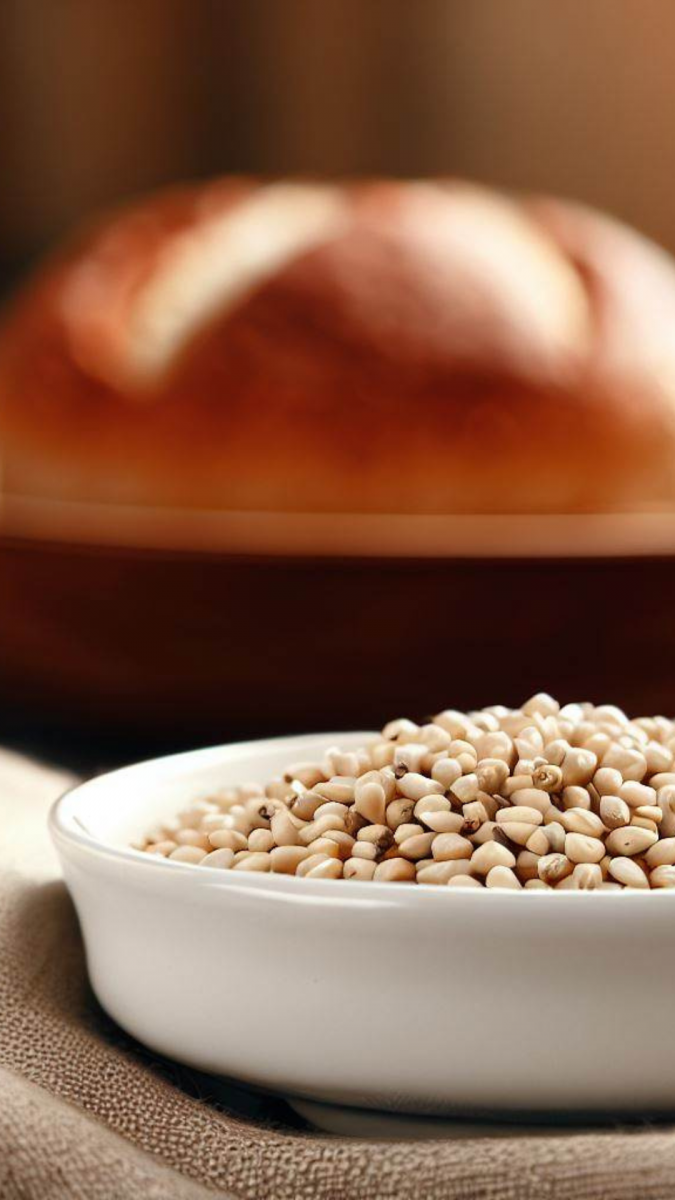
Shredded Coconut
Using shredded coconut as a substitute for sesame seeds can add a unique tropical twist to your dishes. Shredded coconut has a sweet and slightly nutty flavor, which can work well in both sweet and savory recipes. Here are some ways you can use shredded coconut as a substitute for sesame seeds:
- Baked goods: Sprinkle shredded coconut on top of cakes, muffins, cookies, or bread before baking. It will add a delightful texture and a sweet coconut flavor to your baked goods.
- Coatings and crusts: Use shredded coconut as a substitute for sesame seeds in coatings for chicken, fish, or tofu. Combine it with breadcrumbs or other seasonings for a delicious and tropical-flavored crust.
- Desserts: Incorporate shredded coconut into desserts like pies, tarts, and bars. It can be a delicious and complementary addition to various sweet treats.
- Rice and grain dishes: Sprinkle shredded coconut over rice, quinoa, or couscous to add a tropical touch and a subtle sweetness.
- Smoothies and yogurt bowls: Mix shredded coconut into your smoothies or you could also sprinkle it over yogurt bowls for added texture and flavor.
- Granola and trail mix: Mix shredded coconut with nuts, dried fruits, and seeds to create a tasty and tropical-inspired granola or trail mix.
- Curry dishes: Add shredded coconut to curry dishes for a creamy and sweet element that pairs well with spices.
When using shredded coconut as a substitute, consider its sweetness and adjust the quantity based on your taste preferences and the specific recipe you’re working with. Shredded coconut can be readily available in grocery stores and comes in both sweetened and unsweetened varieties. Depending on the dish, you can choose the appropriate type to achieve the desired level of sweetness. Also, keep in mind that the texture and appearance of shredded coconut are quite different from sesame seeds, so the final dish may have a unique and visually appealing touch.
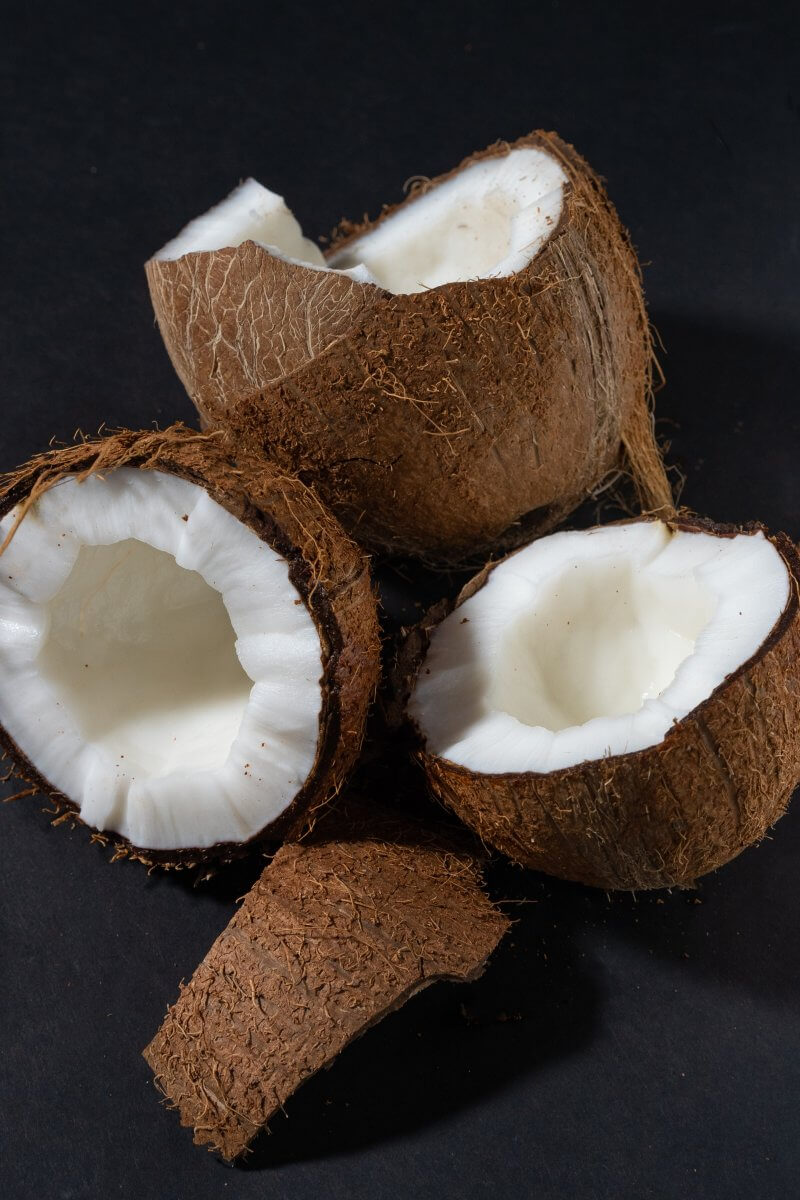
Almonds or other chopped nuts
Using almonds or other nuts as a substitute for sesame seeds can add a rich nutty flavor and crunchy texture to your dishes. Here are some ways you can use almonds or nuts as a substitute for sesame seeds:
- Baked goods: Chop or crush almonds or other nuts and use them as a topping for bread, muffins, cookies, or other baked goods before baking. They can provide a delicious nutty flavor and a pleasant crunch.
- Coatings and crusts: Use ground almonds or other nuts as a substitute for sesame seeds in coatings for chicken, fish, or tofu. You can also combine them with breadcrumbs or other seasonings for a flavorful crust.
- Salad topping: Sprinkle chopped or sliced almonds or nuts over salads to add a delightful crunch and a nutty taste to your greens.
- Nut butters and spreads: You can make almond or other nut butter by blending roasted nuts with a bit of oil and salt. This can be a delicious alternative to sesame seed butter (tahini).
- Rice and grain dishes: Mix chopped or sliced almonds or nuts into rice, quinoa, couscous, or other grain dishes to add a nutty touch and increase their flavor and nutrition.
- Snack mixes: Why not also try mixing chopped or sliced almonds or nuts with other nuts, dried fruits, and seeds to create a tasty and nutritious snack mix.
- Desserts: Incorporate chopped or ground almonds or nuts into desserts like pies, tarts, and bars for an extra nutty flavor and texture.
When using almonds or nuts as a substitute, keep in mind that they have a stronger flavor than sesame seeds, so you may need to adjust the quantity based on your taste preferences and the specific recipe you’re working with. Additionally, consider any potential nut allergies when using nuts as a substitute, and be mindful of the overall flavor profile of the dish.
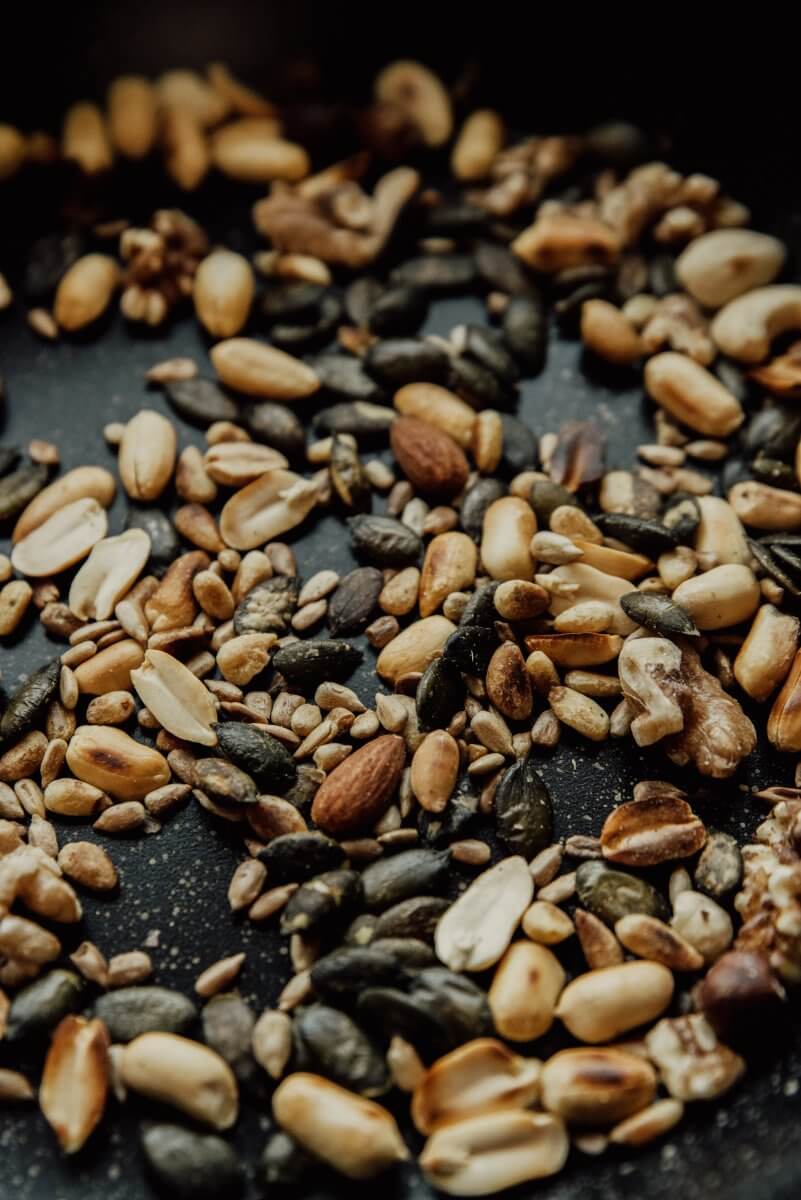
Summary for Sesame Seed substitutes
Okay – that’s you all sorted with suitable substitutes for sesame seeds.
In conclusion, sesame seeds are a versatile ingredient commonly used in various cuisines around the world. However, if you need to find a substitute for sesame seeds due to allergies, dietary preferences, or availability, there are several options to choose from:
- Poppy seeds: These have a nutty flavor and can be used in baked goods, salads, and coatings.
- Sunflower seeds: They offer a similar crunch and mild nutty taste, making them suitable for baked goods, salads, and granola bars.
- Flaxseeds: Ground flaxseeds work well in baked goods, smoothies, and as an egg substitute.
- Chia seeds: Chia seeds are rich in nutrients and can be used in smoothies, puddings, and dressings.
- Pumpkin seeds (pepitas): These have a nutty and earthy flavor, making them suitable for savory dishes and granola mixes.
- Hemp seeds: Hemp seeds have a nutty taste and can be used in smoothies, salads, and granola.
- Almonds or other nuts: Chopped or ground almonds and other nuts can provide a nutty flavor and crunch to various dishes.
- Shredded coconut: Shredded coconut has a sweet and nutty taste and can be used in baked goods, coatings, and desserts.
When using substitutes, consider the specific recipe and the flavor profile you want to achieve. Some of the substitutes listed may have slightly different tastes and textures than sesame seeds. Always take into account any allergies or dietary restrictions when using substitutes. Enjoy exploring new flavors and textures in your dishes with these sesame seed alternatives!
We have gathered together a lot more facts on ingredients such as herbs, spices, oils, nuts, etc. if you would like to learn some more.
